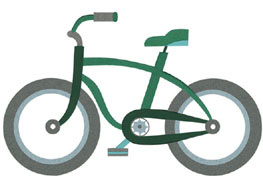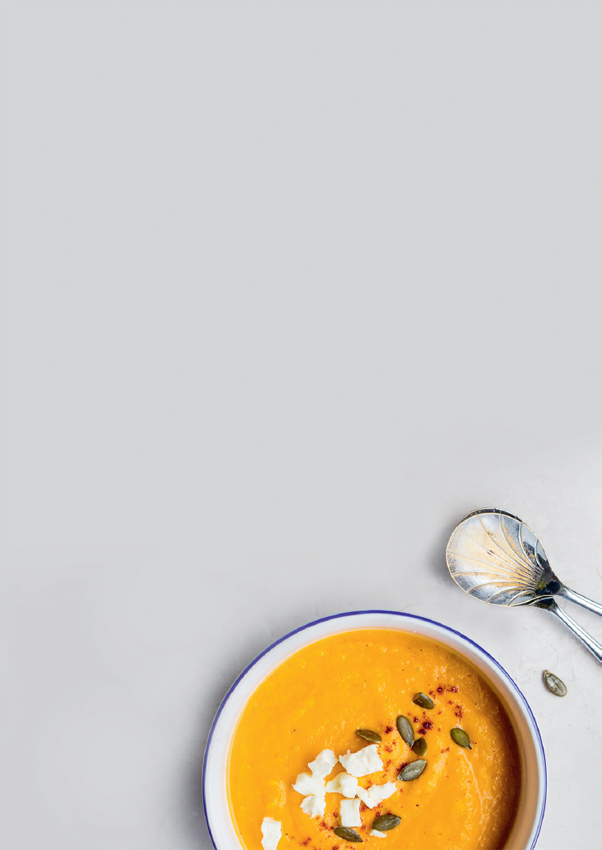
The lagom guide to physical happiness

We can’t all be naturally blessed with a flowing mane of golden hair and a lithe physique, but we can learn a thing or two from Swedes about how to look after our bodies. They take a no-nonsense approach, simply enjoying a balanced diet, neither denying themselves that cinnamon bun nor overdoing the salad. They also naturally incorporate exercise into their day, favouring the bike over a car or public transport, whether there’s sun, rain, wind or snow. So even on the busiest of days, they’ve got their heart pumping.
It’s safe to say that if you’re not a fan of fish or potatoes, you might struggle in Sweden. No holiday smorgasbord is complete without them. National dishes (or husmanskost) include sill och potatis (a serving of herring and potatoes with lingonberries), köttbullar med potatismos (meatballs and mash) and pyttipanna (a mix of cubed potatoes, meat and onion with a side of pickled beetroot). Joking aside, the Nordic diet is fast being recognized for its health benefits. The average life expectancy in Sweden is 80.3 years for men and 84.1 years for women, which puts the country firmly in the top ten of the World Health Organization’s ranking system.
Nordic meals are all about balance and eating seasonal produce. In fact, a study by the Nordic Centre of Excellence demonstrated that a healthy Nordic diet can improve cholesterol levels, lower the risk of coronary heart disease and reduce inflammatory conditions (such as arthritis and Crohn’s disease).12 In other words, it’s good for your heart and waistline!

Cala Maffia/Unsplash
Herring: Salted, smoked, fried or pickled, there’s evidence to suggest the humble herring has been on the Nordic menu since Neolithic times. This small fish is relatively cheap to buy and easy to store. It’s a great source of vitamin D and is rich in omega-3 fatty acids, which are known to prevent heart disease, help your brain function and boost your immune system.
Potatoes: A staple around the world, the common spud carries many health benefits. The vegetable is rich in potassium (helping to lower blood pressure), fibre and vitamins C and B. Once cooked, it’s high in resistant starch, which ultimately helps the body burn fat.
Filmjölk: A traditional fermented milk, this healthy dairy product is commonly eaten with cereal at breakfast time. The lactic acid bacteria ‘is considered to facilitate the digestive process, strengthen the immune system and reduce the risk of allergy’, explains Richard Löfgren, from dairy company Skånemejerier.
Lingonberry: Also known as cowberries, mountain cranberries and partridge berries, lingonberries grow in Nordic forests and are enjoyed as jam, with pancakes or as a relish. Not only are they packed with antioxidants, vitamins A and C, fibres and magnesium, researchers at Lund University13 have found that they can also help regulate your metabolism.
Crispbread: Known locally as knäckebröd, crispbread has been a staple in the Swedish diet since AD 500. In part, its popularity is thanks to its long expiry date and low price, but it’s also been found to have health benefits. Traditionally made from wholemeal rye flour, salt and water, it’s low in fat, high in fibre and packed with vitamins, antioxidants and minerals.
Rotten fish
Although Swedes have mastered the art of moderation, there’s one thing that even they agree is far from lagom: surströmming. Famous for its overwhelmingly putrid smell and strong, acidic taste, it’s herring treated with just the right amount of salt to prevent it from going rotten. Then it’s left to go off for just over six months before it’s tinned. The fermented herring is served once a year (somewhere around the third Thursday in August) and consumed outdoors – preferably while holding your nose.
You may be someone who loves to work up a sweat at the gym or take a 10k run before breakfast. If so, great! But in our increasingly busy lives, it can be hard to find time to fit in a workout. Fear not, though – I’ve noticed that, as part of the lagom mind-set, Swedes are adept at incorporating exercise into their daily lives without breaking into a sweat. Experts also agree that by making small changes to your daily life (such as cycling or walking instead of driving), you can enjoy benefits such as a reduced risk of coronary disease, lower blood pressure, weight loss and lower stress levels.

Matthew Kane/Unsplash
Five easy ways to integrate exercise into your daily life
Cycle or walk to work. Research has linked walking or cycling to work with improved mental well-being.14 In other words, ditching the daily car ride for a physical mode of transport makes you happier. Hurrah!
Park at the back of the car park or get off the train one stop early and then walk the extra distance. It may not seem like much but these extra steps build up over time.
Take the stairs instead of the lift. It’s said you burn approximately 0.17 calories for every step you climb, which equates to 1.5 calories every ten steps! Reason enough to skip the lift and climb the stairs instead?
Stand rather than sit at your desk. Did you know that a 150lb person burns 114 calories an hour simply from standing? That’s 912 calories a day. Time to take a stand!
Walk and talk. Skip the café and get a latte-to-go instead. Meeting up with friends provides the perfect opportunity to take a leisurely walk in nice surroundings and catch up at the same time.
Making the move from London to Malmö was something of a culture shock. And, believe it or not, one of the biggest shocks of all was swapping the London Underground for the bicycle lanes of Malmö. Now, Malmö is a great city for cyclists: it’s relatively small and flat and has a myriad of cycle paths, complete with traffic lights, priority crossings and pump stations. In fact, it was recently ranked sixth in The Copenhagenize Bicycle Friendly Cities Index (http://copenhagenize.eu/index). But what I struggled with is that, in Sweden, cycling is an integral part of daily life – going to the supermarket, collecting the kids from school, nipping into town or even going to the pub. Pedal power is the transport of choice, rain, snow or shine!
I’ve adapted over time, and today I think nothing of using my bike daily. In fact, I find it a lot more practical and can highly recommend it. With more than a billion people worldwide getting into cycling and roads becoming more bike friendly, here are nine great reasons you should think about hopping on your bike, too:
+ You will save time waiting for public transport
+ There’s no need to look for a parking space
+ You can avoid traffic jams
+ It can be enjoyed by all ages
+ You get fresh air
+ It’s better for the environment
+ It’s great for your health
+ It’s a good stress buster

Folio Images/Alamy Stock Photo
Fashionistas, look away now – when it comes to dressing the lagom way, it’s all about being practical. Whether we’re talking about a quick trip to the local shop, everyday work attire, a night out on the town or coping with extreme weather, the Swedes know how to get their clothing just right!
Style the simple way
Spend a morning people-watching from a café and you’ll see that Swedes tend to go for a more minimalist style of dress. Clothes are characterized by clean lines and simple colour blocks, with a hint of the latest trends. It’s highly practical, because most things are easy to mix and match, which not only saves time in the morning but also means each item goes that bit further.
The capsule wardrobe
Loosely speaking, the Swedish wardrobe could be likened to a capsule wardrobe – a minimalist, highly practical closet, created by clearing out unwanted or unused clothes and replacing them with a limited number of loved, highly versatile garments, which can ultimately be worn together.
Because a capsule wardrobe makes it easy to pick an outfit, you take the stress out of getting dressed and spend less time and energy on shopping and laundry. It’s also more economical, and those who try it say it makes them feel happier.
‘As I started living with a small, intentional wardrobe, I noticed that I felt joyful again,’ enthuses Caroline Rector, founder of blog Un-Fancy.com. ‘I saw, with fresh eyes, that happiness, contentment and joy come from within – not from stuff or external circumstances.’ Really, what’s not to love?

StockSnap/Unsplash
IM Priscilla/Unsplash
Six steps to creating a capsule wardrobe
Remove every single item from your wardrobe and lay everything out in front of you.
Separate the garments into four piles: items you love and wear now, pieces you never wear but have kept for sentimental reasons, garments you no longer wear and dislike, and pieces that belong to another season. Store out-of-season garments and other pieces you can’t bear to part with, and either sell or donate clothes you no longer wear.
Arrange the remaining items into a series of outfits. Each and every piece should mix and match with two or more other outfits.
Narrow the selection down to anywhere between 20 and 40 items (depending on your different needs, that is, if you have a separate work style, you may need more pieces). This includes tops, bottoms, dresses, outerwear and shoes, but not accessories like hats, scarves and jewellery. If necessary, shop for anything missing in your collection.
Neatly store away out-of-season items and arrange this season’s garments in your wardrobe so that everything is clearly visible. Stick to the season’s items for three months (in other words, a season without shopping – gasp!).
Make a plan for your next capsule wardrobe two weeks before the next season. Pull out next season’s garments from storage and lay them out alongside the items in your wardrobe. Make a note of any items you are missing, keeping new purchases to a minimum.
A lagom guide to keeping warm and dry
When I first moved to Sweden, I can’t tell you how many times I cycled to a meeting and arrived looking like a drowned rat, or wore white trousers to nursery parties (how was I to know we were going to eat barbecued hotdogs while sitting on the forest floor?). But eventually these wardrobe malfunctions wore me down, and I slowly adapted.
These days I wear practical, weather-appropriate clothes that keep me dry and comfortable, no matter what the temperature. And guess what? I feel far happier and more relaxed for it. Don’t get me wrong, there’s a time and place for the little black dress – it’s just that there’s also a time for long johns and waterproof trousers (and in the north, even a thermal skirt – yes, really!).

Cameron Stow/Unsplash
‘There is no such thing as bad weather, only bad clothing.’ Swedish proverb

If you’ve ever tried to navigate the cobbles of a Swedish square or cycled into town in high heels, you’ll know where I’m heading with this. As with most things Swedish, the emphasis for footwear is on practicality and comfort. The lagom shoe is not too flat, not too high, waterproof, breathable and increasingly sustainable.
You still see kitten heels, but they’re mainly confined to bars and nightclubs. ‘My shoes need to conform to my lifestyle and ensure I’m ready for anything – like running straight from a business meeting to the school gates,’ Elin Sigrén, the stylish Swedish jewellery designer and founder and CEO of SÄGEN, tells me.
She has a point. Not only are flat shoes practical but they’re also better for our health. Countless studies have shown that prolonged use of heels can lead to a dozen injuries, including weak ankle muscles, shortening of the Achilles tendon and back pain. Trust me, the lagom shoe is in, and your body will thank you for it.
plainpicture/LPF
Of course, many Swedes are lucky enough to be blessed with a beautiful blonde mane, but it’s how they wear it that fascinates me. Loose, scraped back into a ponytail or pinned up – it doesn’t matter as long as it gets you out of the door quickly! Needless to say, it will still look effortlessly cool.
Take the just-got-out-of-bed bun, also known as a topknot. So simple, so quick – and you can update it in the evening with a twist or plait for the ultimate Swedish hairstyle. But as ‘thrown together’ as it may appear, there is a strategy involved.
How to achieve the messy top knot
+ Ensure your hair isn’t newly washed (it’s far trickier to achieve this style with silky smooth hair).
+ Scrape your hair together and pull it straight up over your head.
+ Twist it downwards towards the crown, stopping an inch above your head.
+ Wrap the hair around itself to form a loose bun.
+ Use as many kirby grips or bobby pins as you need for a secure hold.
+ Tease out a few strands to give it that ‘I’ve worn this bun all day and night’ look, and varsågod (‘there you go’).